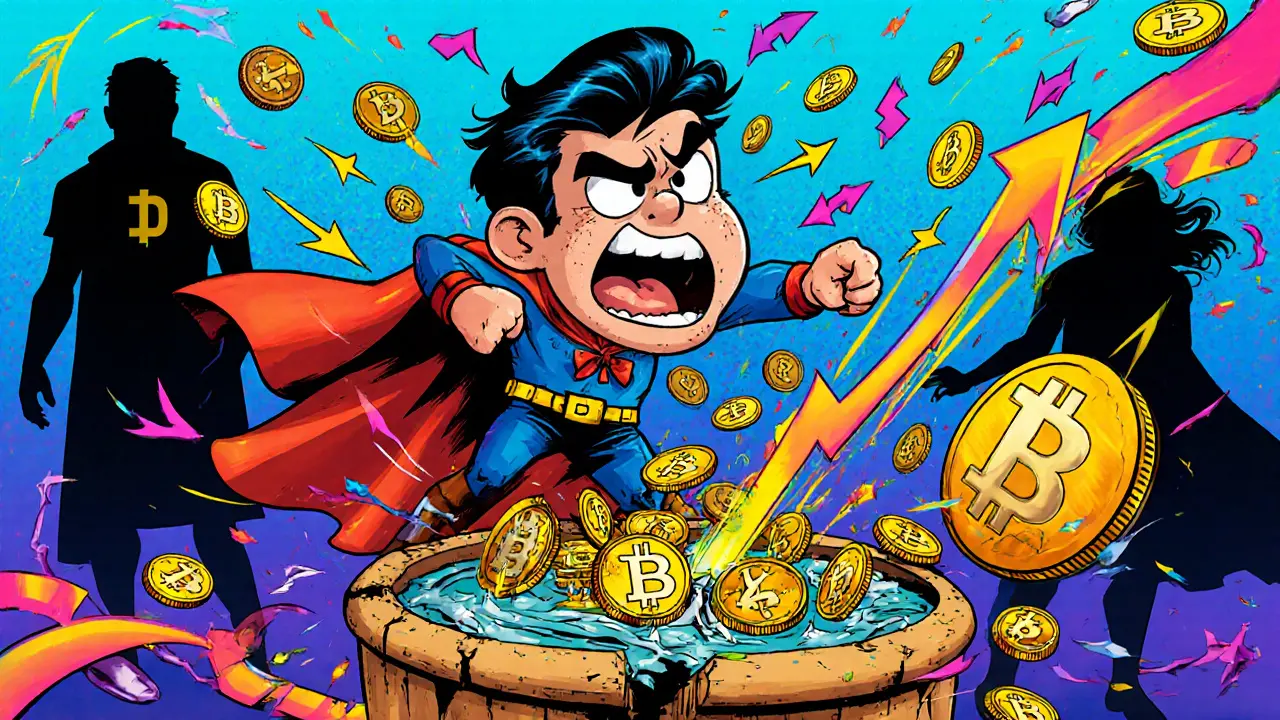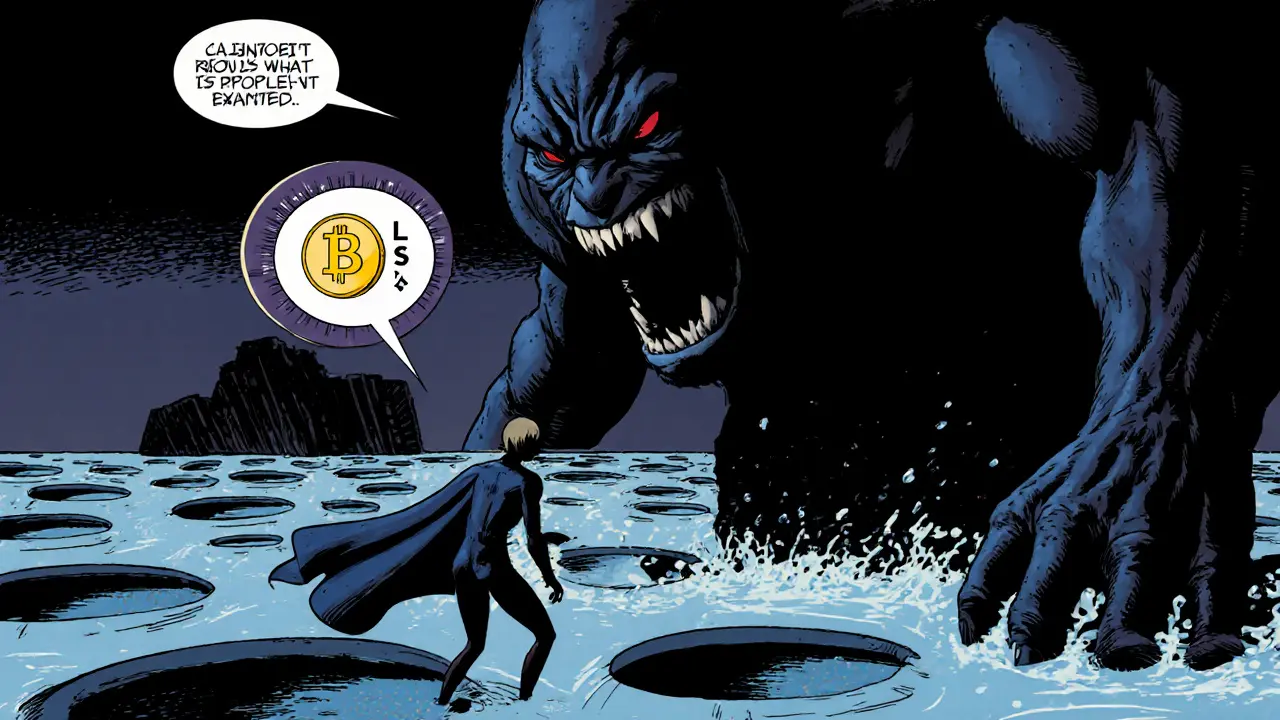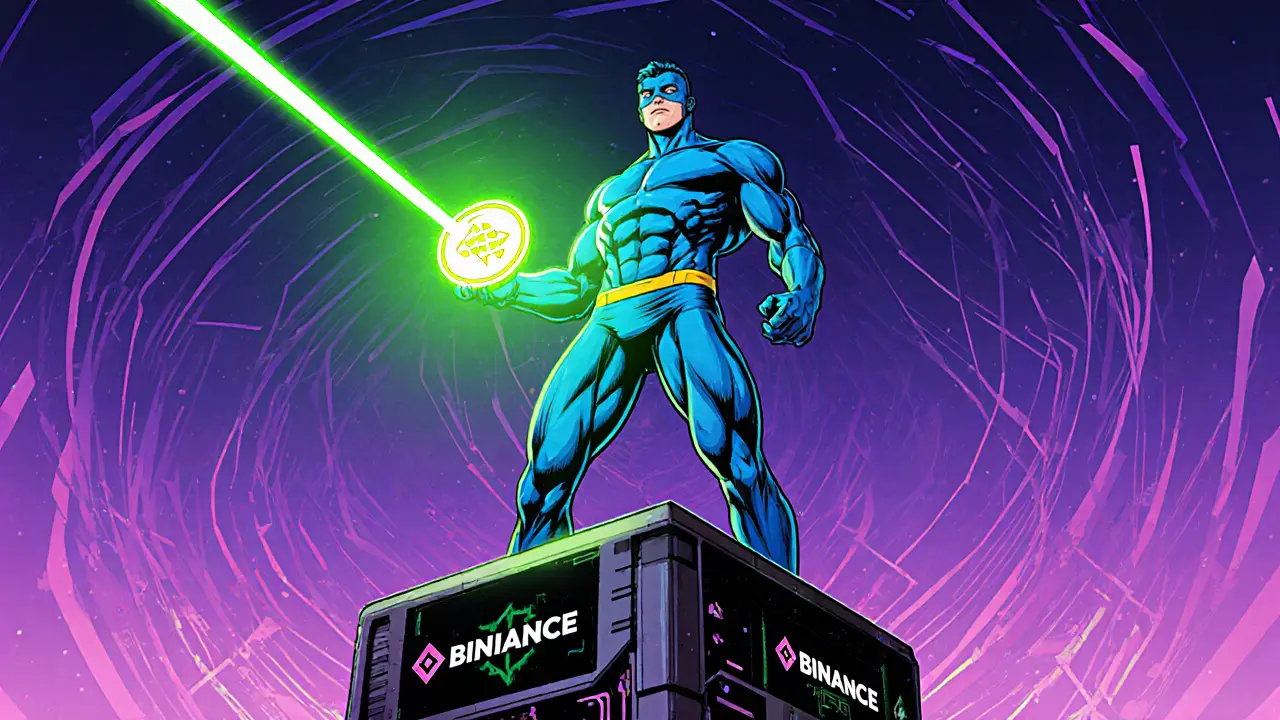LSR Slippage Calculator
Calculate how much extra you'll pay when buying LaserEyes (LSR) due to its low liquidity. Based on the current 24h trading volume of $114.56 USD, this tool shows the estimated slippage you'll experience.
Important: The LSR token has extremely low liquidity with only $114.56 USD in 24-hour volume, resulting in significant slippage for trades. This calculator shows typical slippage you can expect when trading this token.
When you hear the name LaserEyes (LSR) is a utility token built for the LSR Finance analytics platform, you might wonder if it’s just another meme coin or something with real purpose. The short answer: it’s a niche token that powers a data‑heavy service for crypto investors. In this guide we’ll break down what LaserEyes does, where it lives on the blockchain, how you can actually use it, and what the numbers say about its market health.
Why LaserEyes Exists - The Problem It Tries to Solve
Crypto investors drown in data. Every token has a whitepaper, a GitHub repo, a community chat, and dozens of on‑chain metrics. Sorting through security scores, community sentiment, and cost‑of‑business indicators takes time and expertise. LSR Finance claims to solve that overload with a single number - the Laser Desk Score a proprietary rating that aggregates multiple analytical factors into one easy‑to‑read figure. The idea is that instead of juggling ten dashboards, a trader can glance at the Laser Desk Score and decide whether to investigate further.
Technical Foundations - Where the Token Lives
LaserEyes is not a standalone blockchain. It lives on the Binance Smart Chain (BSC) a high‑throughput, low‑fee network compatible with the Ethereum Virtual Machine. Because BSC is compatible with popular wallets like MetaMask and Trust Wallet, acquiring LSR is as simple as swapping BNB for LSR on a decentralized exchange. Currently the only places you’ll find it are the PancakeSwap v2 and v3 pools - namely LSR/BNB, LSR/USDT, and LSR/USDT on v3. The token’s contract is standard BEP‑20, meaning it follows the same interface as most BSC tokens.
One of the biggest practical hurdles is liquidity. As of October 26 2025 the 24‑hour trading volume sits around $115 USD, spread thinly across three pools. That translates into significant slippage for even modest trades. If you try to buy $100 worth of LSR, you could end up paying $105 or more depending on which pool you use.
Token Economics - Supply, Price, and Market Cap
LaserEyes has a fixed total supply of 402.5 million tokens. The circulating supply is a bit fuzzy - some data aggregators list it as zero because the token never left the founding wallet in a way they can track. Ignoring that quirk, the current price hovers around $0.0011 USD according to CoinMarketCap a widely used crypto price aggregator. Multiply those numbers together and you get an approximate market cap of $445 k - a drop in the ocean compared to the $1.2 trillion total crypto market. For perspective, the biggest analytics platforms like CoinGecko and CoinMarketCap themselves command market caps in the billions.

How the Token Is Used on LSR Finance
The only place you can spend LSR is within the LSR Finance the analytics and passive‑investing platform that launched the LaserEyes token ecosystem. Services include:
- Access to the Laser Desk Score for any listed asset.
- Subscription‑style data feeds that feed into third‑party portfolio trackers.
- Potential discounts on future premium analytics tools (though none are publicly released yet).
Market Reception - What the Numbers and Community Say
Beyond the price tickers, there’s almost no chatter about LaserEyes. A quick scan of Reddit, Twitter, and crypto forums returns fewer than 50 mentions in the past month. Sentiment analysis tools flag the token as neutral‑to‑negative, mainly because of the liquidity issue and lack of verifiable utility. Even major news outlets - CoinDesk, CoinTelegraph, The Block - have not published a single article on LSR. The token’s only media presence is a short listing on Livecoinwatch a crypto market data portal and a brief note on HTX a blockchain exchange that maintains a token info page.

Risk Profile - What Investors Should Watch
The biggest red flag is liquidity. With a daily volume of just $115 USD, large orders cause price spikes and slippage that can wipe out potential gains. Second, the platform’s core metric - the Laser Desk Score - lacks independent verification. The team has not published a methodology whitepaper nor opened its code to third‑party audits. Without transparency, it’s hard to trust the numbers.
Regulatory risk is also present. While LaserEyes brands itself as a utility token, regulators in several jurisdictions still scrutinize tokens that could be considered securities. The lack of a clear legal framework or compliance disclosures adds uncertainty.
Quick Reference - Token Specs at a Glance
| Attribute | Value |
|---|---|
| Network | Binance Smart Chain (BEP‑20) |
| Total Supply | 402,500,000 LSR |
| Current Price (USD) | $0.001107 |
| 24h Volume (USD) | $114.56 |
| Primary DEX | PancakeSwap (v2 & v3) |
| Use Case | Payment for analytics on LSR Finance |
| Launch Year | 2023 |
Bottom Line - Should You Care About LaserEyes?
If you’re a crypto analyst looking for a new data source, the token itself probably won’t add value until the platform releases a full‑featured API or integrates with larger aggregators. For speculative traders, the token’s ultra‑low liquidity makes it a risky bet - price swings can be massive, but the upside is limited because there’s no clear path to broader adoption.
In short, think of LaserEyes as a proof‑of‑concept that hasn’t graduated beyond a handful of early‑stage investors. Unless you have a specific reason to test the Laser Desk Score, you can safely skip it and focus on more established analytics tools.
What is the primary function of LaserEyes (LSR)?
LaserEyes is a utility token that pays for analytics services on the LSR Finance platform, mainly the Laser Desk Score.
Which blockchain does LaserEyes operate on?
It is a BEP‑20 token on the Binance Smart Chain.
Where can I buy LaserEyes?
The token is only listed on PancakeSwap (v2 and v3) trading pairs like LSR/BNB and LSR/USDT.
Is LaserEyes considered a security?
The token is marketed as a utility token, but without formal legal opinions its classification remains uncertain.
What are the biggest risks of holding LSR?
Low liquidity, lack of independent audits for the scoring model, and limited adoption are the main concerns.


Rohit Sreenath
October 26, 2025 AT 09:39LaserEyes sounds like hype wrapped in a token.
Sam Kessler
November 4, 2025 AT 09:39The LSR instrument epitomizes a hyper‑modular tokenization paradigm predicated on data‑centric utility. Its deployment on Binance Smart Chain leverages BEP‑20 compliance to attenuate gas friction while preserving full EVM interoperability. The token’s liquidity profile, however, betrays a systemic scarcity of market depth, manifesting in price slippage that rivals emergent micro‑cap phenomena. Moreover, the proprietary Laser Desk Score operates as an opaque aggregation function, obscuring the underlying statistical weighting schema. Critics argue that such epistemic opacity invites fiduciary asymmetry, where token holders cede analytical sovereignty to an unverified oracle. From a macro‑economic standpoint, the $115 daily volume constitutes a negligible fraction of total BSC DEX activity, thereby questioning the token’s scalability prospects. The absence of a public API further constrains integration pathways for third‑party portfolio aggregators. Yet, the architectural design does embed a modular plug‑in interface, ostensibly allowing future extensibility pending governance token activation. In the realm of regulatory jurisprudence, the token’s utility classification remains ambiguous, rendering it vulnerable to securities‑law reinterpretations. The scarcity of independent audit reports compounds the risk of algorithmic manipulation. Operationally, the smart‑contract code adheres to standard ERC‑20 semantics, which mitigates technical attack vectors but does not address economic exploitability. Community sentiment data, extracted from sentiment analysis pipelines, portrays a neutral‑to‑negative tilt, primarily driven by liquidity concerns. Notwithstanding these caveats, certain niche analysts posit that early‑stage speculative positioning could capture disproportionate upside should the platform achieve mainstream data‑feed adoption. In summary, LSR is a proof‑of‑concept token whose practical utility is presently constrained by infrastructural and governance deficiencies.
Steve Roberts
November 13, 2025 AT 09:39While everyone shuns it as a dead‑weight, I actually see value in testing the Laser Desk Score for niche arbitrage opportunities.